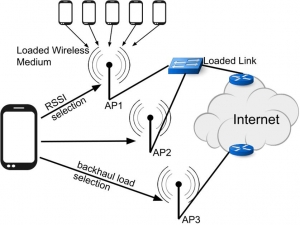The TSA architecture is a solution that allows to integrate user terminals into an SDN architecture. This solution supports end-to-end network optimization, unlike current approaches in which access point selection and network optimization are considered separately. Besides, SDN monitoring and control features become available to end terminals, instead of applying different tools to terminals, access network and backhaul network. Consequently:
- TSA allows to model end-user QoE expectancy as a constraint of global network optimizacion.
- It is compatible with previous solutions (including manual connectivity settings).
- The network can control connection mobility and session continuity in a centralized way, For that purpose, a user profiling module assists the SDN controller.
- It supports differentiated services and applications (it is possible to configure the different network interfaces in a terminal with different connection settings to serve different applications.
- The user profiler predicts user behavior from terminal utilization data and network data.
- In case an application-level intelligence engine is added, it supports joint optimization of context-dependent services (mobile videosurveillance, mobile hospitality services...) and network performance.
TSA is protected by patent "Systems and Methods for Optimizing Network Traffic". US patent application 14866550, deposit date 25-9-2015.
 English (UK)
English (UK)  Español
Español 




